Excerpts from Jim Conrad's
Naturalist Newsletter
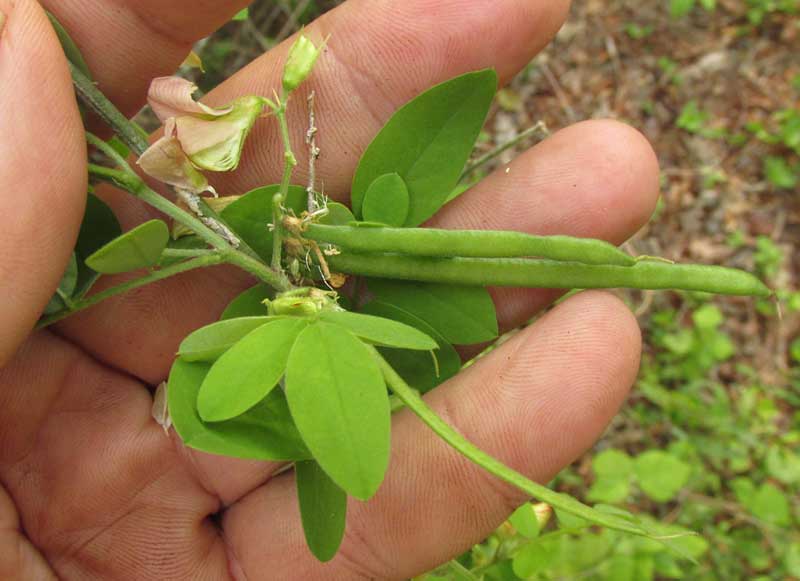
from the April 3, 2016 Newsletter issued from Hacienda Chichen Resort beside Chichén Itzá Ruins; limestone bedrock; elevation ~39m (~128ft), N20.675°, W88.569°; central Yucatán state, MÉXICO
GUATEMALAN INDIGO
At the edge of a trail through the woods a leafy bush with several slender, weak stems arising from the base reached shoulder high, as shown below:
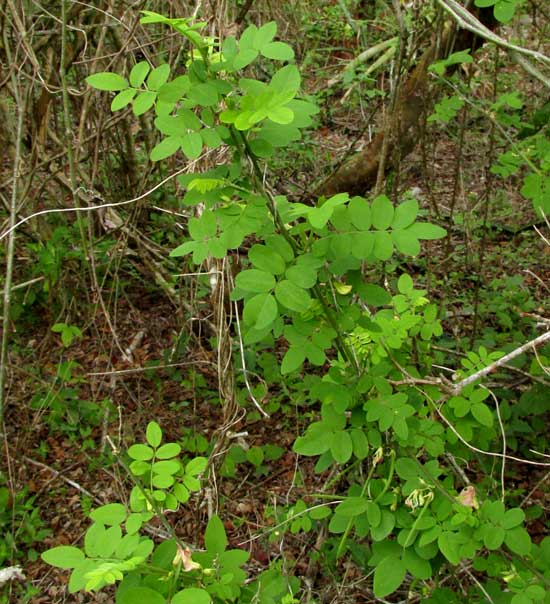
The pinnately compound leaves could have been those of Wisteria, a twining member of the Bean Family up North, as shown below:
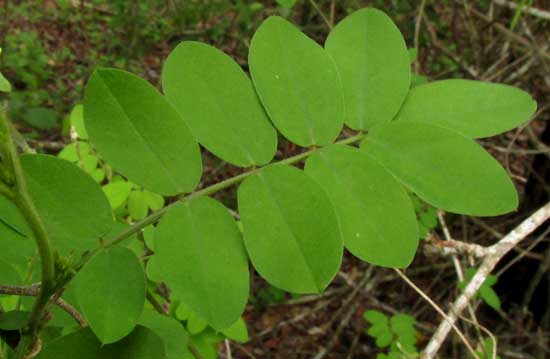
The flowers and fruits confirmed that we had a Bean Family member, shown at the top of this page.
In other words, the fruits are of the legume type, like regular green beans in a garden, and the flowers are "papilionaceous," like regular bean flowers . That means that they consist of five petals of which the top is the largest, then there are two side petals called "wings," and the bottom two petals are fused along their common margin to form a scoop-like structure called the "keel, all shown closer up, below:
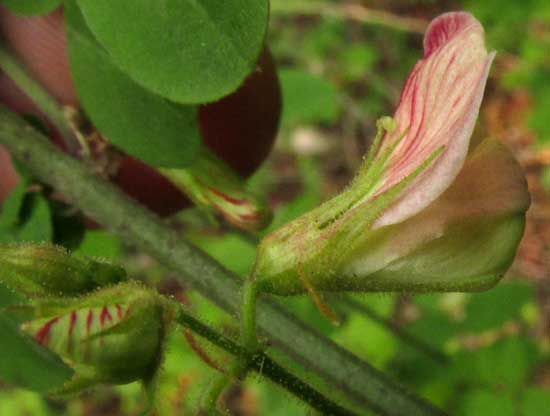
In that picture, one unusual feature is that the top petal, or keel, is red-striped, like peppermint candy. The stripes can be admired more fully from behind, as shown below:
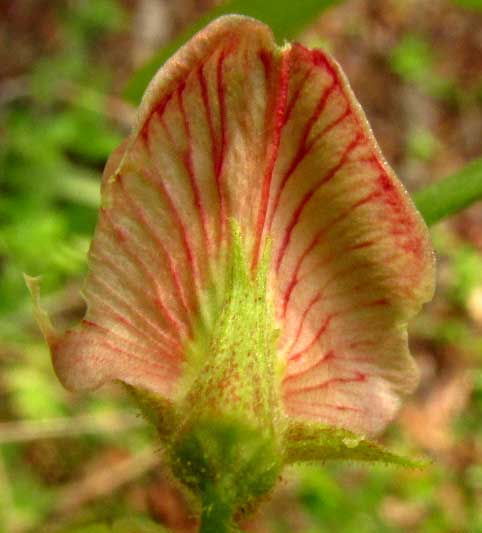
From the beginning the bush looked to me like a kind of indigo, genus Indigofera, of which we've seen several species. For example, you might compare the above pictures with those of the Lindheimer's Indigo we saw in Texas, at www.backyardnature.net/n/h/indigo.htm
This is INDIGOFERA SUFFRUTICOSA, widely distributed throughout the American tropics and subtropics, and therefore known by several English names, including Guatemala Indigo, Wild Indigo, and Anil. The Indigo genus Indigofera embraces over 750 species, with this one and Indigofera tinctoria being the main ones from which indigo dye is produced. Traditionally Guatemalan Indigo was mixed with "Palygorskite clays" to produce Maya blue, a pigment used by the Mesoamerican civilizations, so being next to Chichén Itzá it's easy to imagine our present plant as a descendent of plants used by the Maya living here.